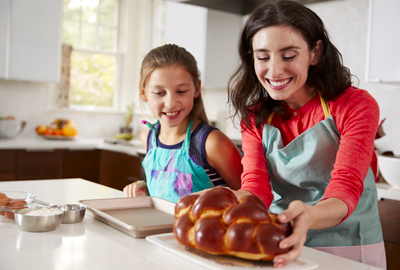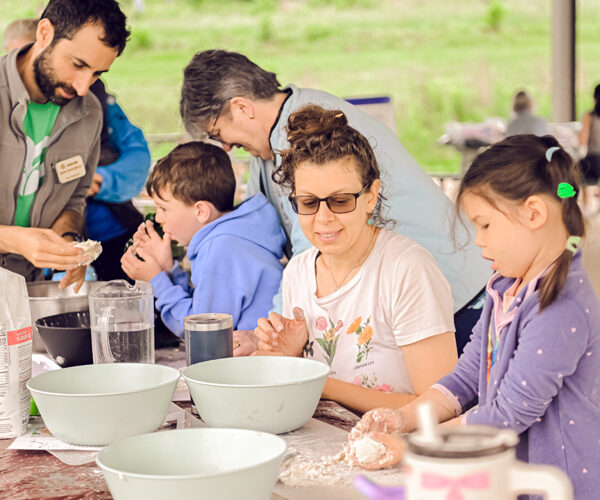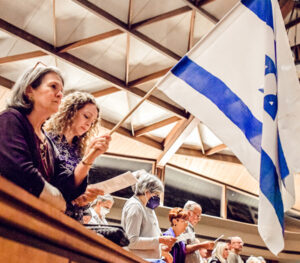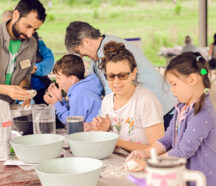Rabbi Aaron Levitt – Executive Director of Jewish Educational Services
6 Ways to Make Rosh Hashanah Meaningful for Kids

Is Rosh Hashanah a happy day or a solemn one? On the one hand, it is a Yom Tov (a good day), whose holiness we mark by making Kiddush, and whose hope we symbolize by dipping apples in honey.
And yet, tradition tells us that it is the Day of Judgment. We gather in synagogues and pray as a community. We listen to the Shofar whose blasts remind us of the Binding of Isaac. Do we think of Rosh Hashanah as the start of The High Holidays or The High Holy Days? And if this can be confusing for us adults, imagine how it must feel to our children.
Thinking back to my childhood in Boston, I have happy memories of Rosh Hashanah. Yes, shul was longer than usual. But we got to hear the Shofar being blown, and found it hilarious when the Shofar sound didn’t come out right. We’d try to hold our breath during the final Tekiah Gedolah to see if we could last longer than the Shofar.
At home we would enjoy festive meals. And every year we looked forward to the social scene of the year: Tashlich. The whole community would gather at Bullough’s Pond, throw our sins away, and then hang out with friends at the gala kiddush hosted by two shul families who lived across the street.
I’m grateful that I have these memories. We want our children to see Judaism as joyful and to feel connected to community. But as they get older and learn more we also want them to realize that everything in Judaism has a deeper meaning, that it’s all about connecting us to God and to our purpose in life.
Here are a few ideas parents can try at home to connect children of different ages to Rosh Hashanah in a way that is both joyful and meaningful:
1. Shana Tova Cards
Children can decorate beautiful New Year’s cards and write heartfelt messages to the people in their lives (family members, friends, neighbors or teachers).

2. Rosh Hashanah Preparations
Invite children to help bake Challah, prepare the Simanim (symbolic foods for Rosh Hashanah), decorate the home, and set the table. When kids get involved in the preparation they get much more excited about participating in the holiday itself.
3. Simanim At The Table
In addition to apples in honey, there are lots of other tasty and exotic foods (ex. pomegranates, dates, beets…) that are traditionally eaten at the Rosh Hashanah meal. Each symbolic food represents something we hope for the new year. Spend time as a family talking about those hopes.

4. Shofar
Learn the story of Avraham and Yitzchak together. Talk about what the Shofar represents. Practice the three different types of Shofar sounds. In shul, challenge your children to count how many total blasts they hear.
5. Zichronot Memory Jar
Before Rosh Hashanah, everyone in the family can take small slips of paper and write memories from the past year. Then grab a big jar (kids can decorate it) and put all the pieces of paper inside. At each Rosh Hashanah meal take out a memory and share why it was special.
6. Tashlich
On the second day of Rosh Hashanah, walk as a family to a nearby pond or stream and “throw away” your mistakes from the past year. Talk about how we all make mistakes, but our mistakes don’t define us. We can throw them away and hold onto the good inside us.
Subscribe to our newsletter
The Associated is a home for everyone in the Baltimore Jewish community. We offer several email lists to help people find a community, engage with their peers and support Jewish journeys around the world.
Join Our Mailing ListAdd Impact to Your Inbox
Sign up for our newsletter
Subscribe to our newsletter
The Associated is a home for everyone in the Baltimore Jewish community. We offer several email lists to help people find a community, engage with their peers and support Jewish journeys around the world.
Join Our Mailing List









 Please Wait while we loading your video.
Please Wait while we loading your video.